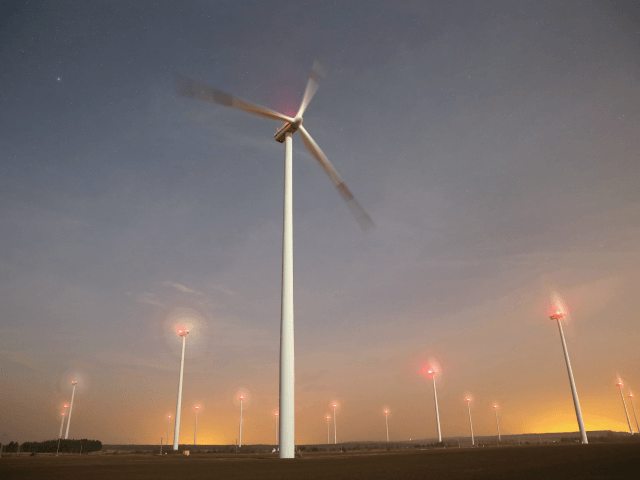Donald Trump has asked the question which the renewables industry would rather not answer: “What happens when the wind doesn’t blow?”
He was speaking at a fundraiser for the outstanding GOP Congresswoman Claudia Tenney in Utica, NY, last week. His remarks on coal and the wind industry, especially, are causing liberal heads to explode.
Here's the transcript of Trump's remarks at a New York fundraiser last week about coal and windmills. pic.twitter.com/ADckyr4IET
— Daniel Dale (@ddale8) August 19, 2018
This is classic Trump: trolling his enemies, showering love on the base, inventing new words and – behind a mask of apparently guileless stream-of-consciousness – slipping in some really quite serious, informed and perceptive remarks about the energy industry.
“Subsidary”.
His critics can barely contain their fury that the president they hate is getting away with using words that aren’t in the dictionary.
"subsidary"?
I've never heard that word and the Internet doesn't seem to have either. Even if he meant or said "subsidiary," it doesn't seem that word is ever used to mean a beneficiary of a subsidy. @RobinSimcox
— Oren Kessler (@OrenKessler) August 20, 2018
Every time they play this game, Trump wins. It makes them look petty, arrogant, condescending: after all, everyone knows what Trump meant when he coined that word, so what’s the problem?
Meanwhile, Trump gets on with the business that really matters. His mission to Make America Great Again is only going to succeed if he can carry the people with him. So he doesn’t just need to do what he needs to do. First, he has to explain why it needs to be done. And Trump is really good at this. It’s one of the reasons his critics find him so maddening. While they are pointing fingers, going “He’s so dumb. So vulgar. And that word doesn’t even exist”, Trump is delivering a potted economics lecture better than anything you’d ever hear at Yale or Harvard.
“What happens when the wind doesn’t blow?”
It’s kind of key, wouldn’t you say? If – as the greenies, the rent-seeking renewables troughers and their useful idiots in the media keep trying to tell us – wind is going to provide the “clean” energy that enables us to “transition” from “dirty” fossil fuels, what are we supposed to do in those long, long intervals when the wind isn’t blowing?
And the answer – which the industrial wind industry would, of course, prefer us not to think about – is that fossil fuel power needs to be on standby, 24/7 to make up the shortfall.
So, as Trump correctly points out in his punchy, accessible way, wind is intermittent, uneconomic and doesn’t actually replace fossil fuel power.
As he also correctly points out, wind turbines – aka bat-chomping, bird-slicing eco-crucifixes – kill avian fauna on an industrial scale.
Here’s what Oxford ecologist Martin Hambler had to say on the subject in the Spectator:
Every year in Spain alone — according to research by the conservation group SEO/Birdlife — between 6 and 18 million birds and bats are killed by wind farms. They kill roughly twice as many bats as birds. This breaks down as approximately 110–330 birds per turbine per year and 200–670 bats per year. And these figures may be conservative if you compare them to statistics published in December 2002 by the California Energy Commission: ‘In a summary of avian impacts at wind turbines by Benner et al (1993) bird deaths per turbine per year were as high as 309 in Germany and 895 in Sweden.
Because wind farms tend to be built on uplands, where there are good thermals, they kill a disproportionate number of raptors. In Australia, the Tasmanian wedge-tailed eagle is threatened with global extinction by wind farms. In north America, wind farms are killing tens of thousands of raptors including golden eagles and America’s national bird, the bald eagle. In Spain, the Egyptian vulture is threatened, as too is the Griffon vulture — 400 of which were killed in one year at Navarra alone. Norwegian wind farms kill over ten white-tailed eagles per year and the population of Smøla has been severely impacted by turbines built against the opposition of ornithologists.
Nor are many other avian species safe. In North America, for example, proposed wind farms on the Great Lakes would kill large numbers of migratory songbirds. In the Atlantic, seabirds such as the Manx Shearwater are threatened. Offshore wind farms are just as bad as onshore ones, posing a growing threat to seabirds and migratory birds, and reducing habitat availability for marine birds (such as common scoter and eider ducks).
Wind turbines are ugly, expensive, environmentally damaging and inefficient; they blight views, reduce property values, cause health problems to both humans and animals, disturb the peace with shadow flicker and low frequency noise, despoil the landscape, artificially drive up energy prices, and enrich cynical, grasping, crony-capitalist spivs at the expense of ordinary energy users.
Only a scumbag of the first water would ever wish to profit from this vile industry. Only a complete ignoramus could be in favor of it.
Hating wind turbines really is one of the key litmus tests for any intelligent, civilized person. Trump passes with flying colors. He really, really, really hates the wind industry. And as so often, he’s dead right.

COMMENTS
Please let us know if you're having issues with commenting.